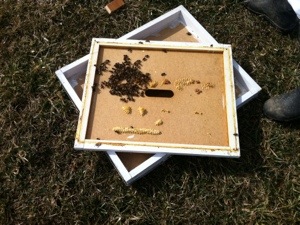Your cart is currently empty!
Category: Bees
-
5 Reasons to Start Keeping Bees
You can ask any beekeeper why they started keeping bees and each will have a story to tell. Below are our top five reasons for beginning an apiary in order of importance. Honey We are interested in eating local food as much as possible. Since there is nothing more local than your own backyard, keeping…
-
Beneficial Weeds
A new look at weeds A weed is a weed is a weed. Except when it is a useful tool around the Farm. We look at weeds differently now that we are living in the country and striving to be more sustainable. Weeds as food Certain weeds with attractive flowers are visited by bees collecting…
-
40,000 Angry Bees
Ever wonder what it’s like to have 40,000 stinger equipped insects upset with you? Visitors to the Farm have many questions about the honeybees. One of the first is usually “Do you have one of those suits?” The answer is “yes”. We both have a full suit that has an integrated hat and veil. Wrists…
-

All the Buzz
Last week we attended Bee School sponsored by the Crossroads Beekeepers out of Effingham. There were several displays and vendors in addition to an excellent workshop format. We attended the section on Managing the Established Hive and found out we are doing many things right. We got some good ideas about things to do in…
